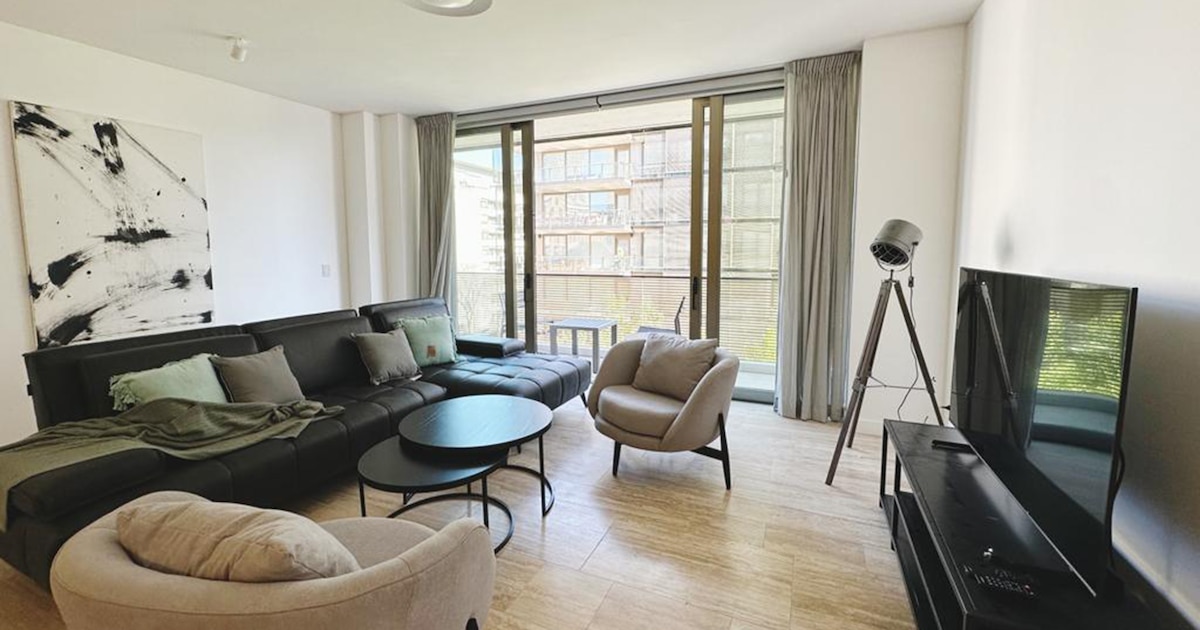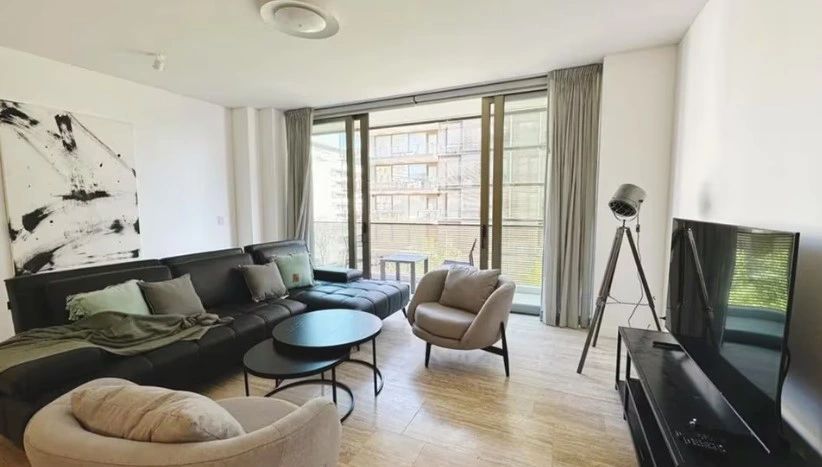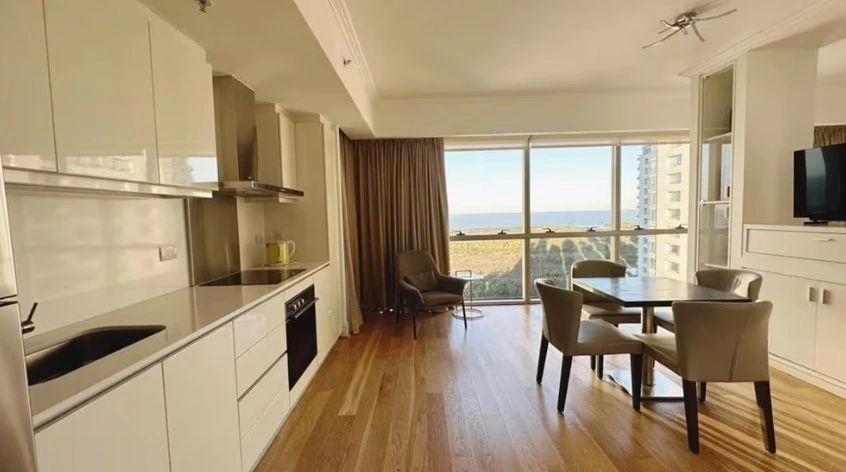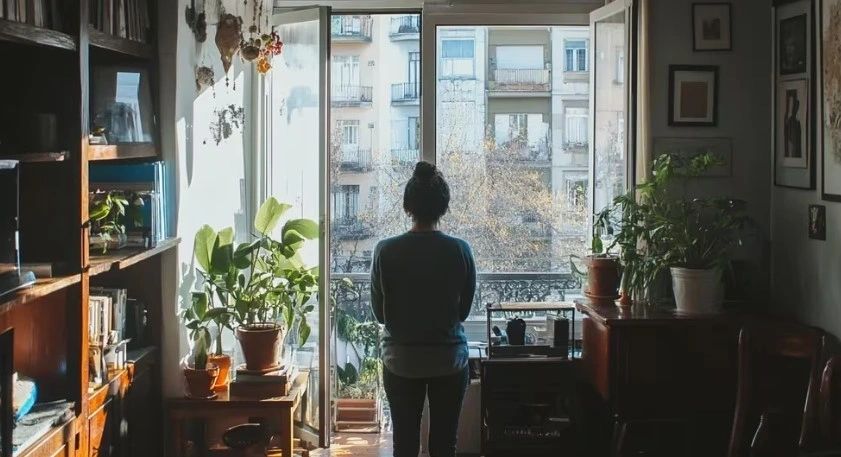BuySellBA
Administrator
Demand for temporary rentals fell by 40%, forcing owners to offer agreements for up to one year - Infobae

Source:

 www.infobae.com
www.infobae.com
September 05, 2024
By Jose Luis Cieri

The fall in tourism has forced owners of furnished and equipped properties to rethink their strategy so that they are not unoccupied for several weeks and thus do not provide any economic benefit.
Given the decline in international tourism, the market for temporary or vacation rentals in Argentina is undergoing a significant change that impacts the behavior of owners.
According to the most recent data, demand for these rentals fell by 40% this year, a phenomenon that forces property owners to quickly adapt to the new circumstances of the segment.
The decline in demand, attributed to economic uncertainty and the fall in tourism, is leading property owners to reconsider their strategies to avoid homes remaining unoccupied for several weeks. Instead of traditional short-term rentals for tourists, many are now opting to offer longer-term contracts.
The trend is to offer rentals ranging from one month to one year, allowing owners to keep their properties occupied and generate stable income.
Dario Rizzo , CEO of Alternativa Properties, explained to Infobae that “the demand from foreigners fell, reducing the profitability of these rentals, especially for periods of up to 30 days. “Tourists from neighboring countries stopped visiting Argentina for shopping and tourism due to inflation in dollars and increasing fixed costs, such as electricity and Internet.”
Unable to increase nightly rates due to low demand, hundreds of property owners have pulled their properties from platforms like Airbnb and transferred them to agreements lasting up to a year.
“Not only the economic context influenced this fall, but also the oversupply in the sector (until the beginning of the year there were almost 20,000 apartments in the city of Buenos Aires), which attracted many owners scared by the Rental Law and attracted by the high returns,” said Ignacio Mel , director of Mel Properties.
This oversupply increased competition, and hundreds of owners found themselves with empty units, especially those that did not meet current demand.
Mel added that, as a result, several owners are returning to traditional rentals. However, they face the complication of emptying the properties of their furniture and equipment. “For this reason, some have opted for short-term rentals, which today provide a better margin and allow them to maintain the furniture in case these units return to the tourist segment in the future.”

Now a large percentage of landlords prefer longer term temporary contracts instead of nightly or weekly rentals.
Rizzo suggests that those with furnished properties consider the short-term rental or relocation model ; and for those who do not have furnished properties, he recommends trying traditional permanent rentals, since yields are increasing. “In particular, there is a high demand for three- and four-bedroom apartments due to the shortage in inventory,” he added.
On the other hand, although there was a slight decrease in the arrival of students, the demand from executives looking for housing in Puerto Madero increased significantly.
“In addition, the flow of digital nomads, foreigners who come to Buenos Aires to work remotely, has grown. This public tends to be less affected by the cost of living compared to tourists, who can change destinations more easily,” said Rizzo.
Taking a two-room apartment in Palermo as a reference, the average rental price for tourists is USD 25 per day, which is equivalent to USD 750 per month. From this amount, USD 300 per month must be deducted for expenses, and considering an occupancy rate of 65%, the net profit is around USD 292 per month.
“In contrast, short-term rentals cost USD 850 per month, with expenses of USD 200, and 90% occupancy, resulting in a net profit of USD 585 per month. Finally, traditional rental housing, at USD 385 per month, with no maintenance fees and 100% occupancy, offers a net profit of USD 385,” Rizzo explained.
The public that comes to study or work tends to plan long-term and is not guided as much by fluctuations in the cost of living, according to sources in the real estate market.
Mel added: “These tenants tend to negotiate the price more, asking for adjustments of USD 50 per month, while tourists change their destination if the conditions are not ideal.”
It is advisable for owners of one-bedroom apartments intended for temporary tourist rental to evaluate the capacity of their unit to compete in a saturated market.
“If the unit is furnished and equipped, it is suggested to consider a short-term rental, from one to twelve months, where there is more demand for this type of unit. Otherwise, it is suggested to opt for a traditional two-year contract,” Mel added.
For foreigners, a passport, deposit and a work certificate or student visa are required if the rental is longer than three months. For locals, a credit check and proof of income are required.

Experts advise owners of a One-bedroom apartment intended for temporary tourist rental to continue in the furnished rental business, but with minimum contracts of one month, since occupancy is much higher and the risk of breakages and problems is lower (Illustrative Image Infobae)
Rizzo pointed out that in relocation rentals , where the public generally has good purchasing power, late payment rates are very low, “in contrast to traditional rentals that require a property guarantee or surety bond.”
Taking as a reference an impeccable two-room apartment in Recoleta, a tourist rental can range between USD 90 and USD 120 per day, while a longer-term rental is around USD 550 to USD 600 per month.
“It is crucial to consider maintenance costs and expenses, which are higher in tourist rentals, lower in short-term rentals, and almost zero in traditional rentals. In terms of profitability, gross rents can vary: between 8% and 10% for Airbnb and between 5% and 7% for a short-term furnished rental. However, expenses and occupancy can tip the balance on the final net income line,” Mel explained.
For short-term rental contracts, which range from one month to one year, the requirements are similar to those for long-term rentals, except that no guarantee is required, but one month's deposit is required.
Depending on the length of the contract, the tenant may be asked for a larger or smaller advance payment.
In the case of daily tourist rentals, the requirements are almost non-existent and are usually managed online through platforms.
www.buysellba.com

Source:

Cayó 40% la demanda de alquileres temporarios y obliga a propietarios a ofrecer acuerdos de hasta un año de plazo
La disminución en la demanda, atribuida a la incertidumbre económica y la caída del turismo, lleva a los propietarios a reconsiderar sus estrategias para evitar que las viviendas permanezcan desocupadas por varias semanas
September 05, 2024
By Jose Luis Cieri

The fall in tourism has forced owners of furnished and equipped properties to rethink their strategy so that they are not unoccupied for several weeks and thus do not provide any economic benefit.
Given the decline in international tourism, the market for temporary or vacation rentals in Argentina is undergoing a significant change that impacts the behavior of owners.
According to the most recent data, demand for these rentals fell by 40% this year, a phenomenon that forces property owners to quickly adapt to the new circumstances of the segment.
The decline in demand, attributed to economic uncertainty and the fall in tourism, is leading property owners to reconsider their strategies to avoid homes remaining unoccupied for several weeks. Instead of traditional short-term rentals for tourists, many are now opting to offer longer-term contracts.
The trend is to offer rentals ranging from one month to one year, allowing owners to keep their properties occupied and generate stable income.
Dario Rizzo , CEO of Alternativa Properties, explained to Infobae that “the demand from foreigners fell, reducing the profitability of these rentals, especially for periods of up to 30 days. “Tourists from neighboring countries stopped visiting Argentina for shopping and tourism due to inflation in dollars and increasing fixed costs, such as electricity and Internet.”
Unable to increase nightly rates due to low demand, hundreds of property owners have pulled their properties from platforms like Airbnb and transferred them to agreements lasting up to a year.
“Not only the economic context influenced this fall, but also the oversupply in the sector (until the beginning of the year there were almost 20,000 apartments in the city of Buenos Aires), which attracted many owners scared by the Rental Law and attracted by the high returns,” said Ignacio Mel , director of Mel Properties.
For an apartment to be rented temporarily, it must be equipped and furnished. It is a requirement both on the part of the tenants and of the regulatory framework in CABA to be able to use this format.
This oversupply increased competition, and hundreds of owners found themselves with empty units, especially those that did not meet current demand.
Mel added that, as a result, several owners are returning to traditional rentals. However, they face the complication of emptying the properties of their furniture and equipment. “For this reason, some have opted for short-term rentals, which today provide a better margin and allow them to maintain the furniture in case these units return to the tourist segment in the future.”

Now a large percentage of landlords prefer longer term temporary contracts instead of nightly or weekly rentals.
Tips and what gives more profitability
Many apartment owners targeting this segment have made different decisions. Few expect a rapid recovery of the Airbnb model in the short term.Rizzo suggests that those with furnished properties consider the short-term rental or relocation model ; and for those who do not have furnished properties, he recommends trying traditional permanent rentals, since yields are increasing. “In particular, there is a high demand for three- and four-bedroom apartments due to the shortage in inventory,” he added.
On the other hand, although there was a slight decrease in the arrival of students, the demand from executives looking for housing in Puerto Madero increased significantly.
“In addition, the flow of digital nomads, foreigners who come to Buenos Aires to work remotely, has grown. This public tends to be less affected by the cost of living compared to tourists, who can change destinations more easily,” said Rizzo.
Taking a two-room apartment in Palermo as a reference, the average rental price for tourists is USD 25 per day, which is equivalent to USD 750 per month. From this amount, USD 300 per month must be deducted for expenses, and considering an occupancy rate of 65%, the net profit is around USD 292 per month.
“In contrast, short-term rentals cost USD 850 per month, with expenses of USD 200, and 90% occupancy, resulting in a net profit of USD 585 per month. Finally, traditional rental housing, at USD 385 per month, with no maintenance fees and 100% occupancy, offers a net profit of USD 385,” Rizzo explained.
The public that comes to study or work tends to plan long-term and is not guided as much by fluctuations in the cost of living, according to sources in the real estate market.
Mel added: “These tenants tend to negotiate the price more, asking for adjustments of USD 50 per month, while tourists change their destination if the conditions are not ideal.”
It is advisable for owners of one-bedroom apartments intended for temporary tourist rental to evaluate the capacity of their unit to compete in a saturated market.
“If the unit is furnished and equipped, it is suggested to consider a short-term rental, from one to twelve months, where there is more demand for this type of unit. Otherwise, it is suggested to opt for a traditional two-year contract,” Mel added.
Requirements
Short-term rental contracts, which range from one month to one year, vary in their requirements depending on whether the tenant is foreign or local.For foreigners, a passport, deposit and a work certificate or student visa are required if the rental is longer than three months. For locals, a credit check and proof of income are required.

Experts advise owners of a One-bedroom apartment intended for temporary tourist rental to continue in the furnished rental business, but with minimum contracts of one month, since occupancy is much higher and the risk of breakages and problems is lower (Illustrative Image Infobae)
Rizzo pointed out that in relocation rentals , where the public generally has good purchasing power, late payment rates are very low, “in contrast to traditional rentals that require a property guarantee or surety bond.”
Taking as a reference an impeccable two-room apartment in Recoleta, a tourist rental can range between USD 90 and USD 120 per day, while a longer-term rental is around USD 550 to USD 600 per month.
“It is crucial to consider maintenance costs and expenses, which are higher in tourist rentals, lower in short-term rentals, and almost zero in traditional rentals. In terms of profitability, gross rents can vary: between 8% and 10% for Airbnb and between 5% and 7% for a short-term furnished rental. However, expenses and occupancy can tip the balance on the final net income line,” Mel explained.
For short-term rental contracts, which range from one month to one year, the requirements are similar to those for long-term rentals, except that no guarantee is required, but one month's deposit is required.
Depending on the length of the contract, the tenant may be asked for a larger or smaller advance payment.
In the case of daily tourist rentals, the requirements are almost non-existent and are usually managed online through platforms.
www.buysellba.com

